#Southern African Development Community
Explore tagged Tumblr posts
Text
The African Union and the Regional Economic Communities
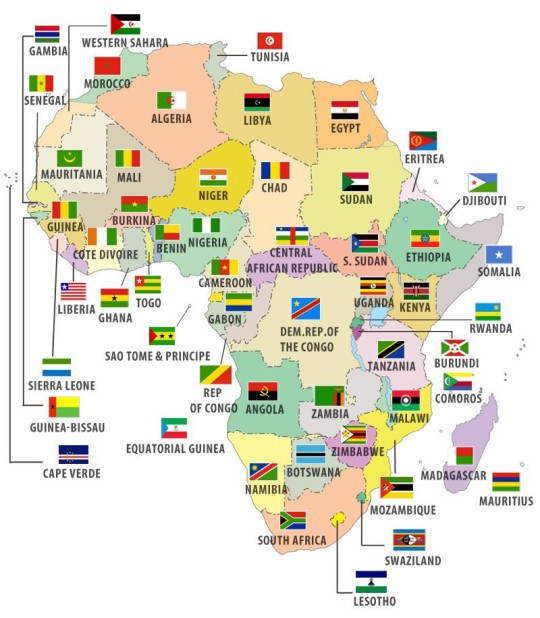
View On WordPress
#African Union#Arab Maghreb Union#Common Market for Eastern and Southern Africa#Community of Sahel-Sahara States#East African Community#Economic Commision Of West African States#Economic Community of Central African States#Intergovernmental Authority on Development#International Confernce on the Great Lakes Region#Regional Economic Communities#Southern African Development Community
3 notes
·
View notes
Text
Not Yet "Hamba Kahle", Thulani, By Chidi Anselm Odinkalu
Thulani Maseko was the outstanding lawyer of his generation. His crime was to believe that his beloved eSwatini, Africa’s last absolute monarchy, could be and deserved to be better. He believed that this cause was best served by reforming the country into a constitutional monarchy and he forged a formidable coalition to advance this goal. For this, he has given his life. His killers and those who…

View On WordPress
#African Union (AU)#Amnesty International (AI)#Chidi Anselm Odinkalu#eSwatini#King Mswati III#Lawyers for Human Rights#Multi-Stakeholder Forum#Southern African Development Community (SADC)#Swaziland#Thulani Maseko
0 notes
Text
Remembering Bayard Rustin: The Unsung Hero of the Civil Rights Movement
written by Levi Wise Kenneth Catoe Jr.
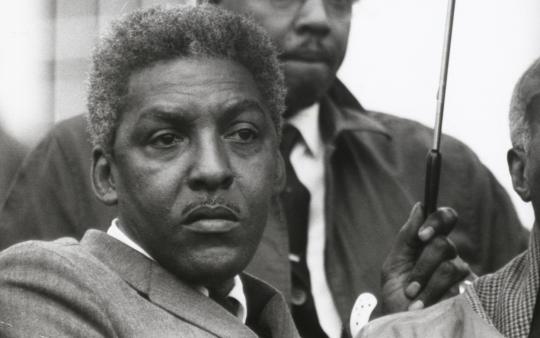
August 1, 2024 - Growing up as a Black boy in Paterson, NJ, and attending Roman and Irish Catholic Parochial schools, Black history was not very familiar to me. I grew up in a religious Southern Baptist family and participated in the church choir. In this context, Martin Luther King, Jr., was all that I knew about Black history until I became a teenage Madonna fanatic. Ironically, Madonna made me aware of Black activists and radicals such as Nina Simone, Jean-Michel Basquiat, James Baldwin, and Bayard Rustin. Bayard Rustin was an African American activist who believed in civil disobedience. Rustin felt that Black people should deliberately break unjust laws but do it non-violently to bring about change and this would play a key role in the Civil Rights movement. He also advocated for LGBTQ rights. Rustin moved to Harlem in 1937 and began studying at City College of New York. It’s interesting to note that at the time CCNY was an all-male college once regarded as ‘Jewish Harvard’ which did not accept Black men—Rustin was an unusual exception. While Rustin was at CCNY he became involved in efforts to defend and free the Scottsboro Boys, nine young black men in Alabama who were accused of raping two white women. Activism for Rustin was something that came naturally. He later became a mentor to Martin Luther King.

Rustin is one of my all-time idols. I have been enamored of him since I learned about him, so I was excited to attend an event dedicated to his life and legacy at the Schomburg Center for Research in Black Culture, “Between the Lines: Bayard Rustin, A Legacy of Protest and Politics.” The event was a conversation between Michael G. Long and Jafari Allen, who edited the book of the same name. Their exchange sparked many revelations and I left the event more aware than when I entered. I felt so much pity for the life that Rustin had to live, including the attack on his character that was rallied against him by other Black people and the distance that Martin Luther King placed between himself and Rustin out of fear of people assuming that he was also gay. I also learned that it was Coretta Scott King who introduced King to Rustin. Scott-King met Rustin during her college years as a fellow activist who practiced civil disobedience. She would ultimately introduce her husband King to civil disobedience tactics. Rustin recalled that his first time meeting King he was strapped with a handgun and that he never traveled without his gun. It was Rustin who told King that if he represented civil disobedience he would have to be willing to put away his firearm, which eventually he did. Nevertheless, this raises the question, who was King really? The “I Have A Dream” pacifist or the “Beyond Vietnam” radical? We will never truly know.
All in all what I did learn was that according to Rustin, King had no idea how to organize an event. Instead, it was Rustin who developed the blueprint for King’s early Civil Rights movement, at least until the day that King removed Rustin from his inner circle.
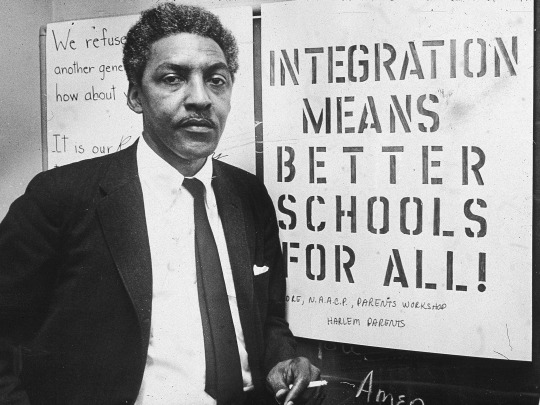
Nevertheless, Rustin returned to organize the March on Washington, despite everything leveled against him by Adam Clayton Powel and Roy Wilkins. Someone noted during the discussion that “it’s funny how karma works given the fact that nobody remembers Wilkins's legacy in comparison to the sudden interest in Rustin.'' If I remember correctly, the comment was made by the moderator, NYU professor Dr. Jarafi Allen, based on the fact that the venue was standing room only, or that the Hollywood lens is now fixated on Rustin’s story, with an Academy Award-nominated movie based upon his life currently in theaters. Wilkins has not received the same interest from Hollywood, perhaps indicating that he is less marketable in the mainstream. Meanwhile, Rustin’s role as an activist for the LGTBQ community is also important for newer generations. Until recently, this legacy and all that he accomplished was invisible, but he has since become a symbol of the “others” and most notably the “forgotten others”. While in his lifetime he was shunned, rallied against, and betrayed by those that he benefitted, history has allowed his legacy the final word.
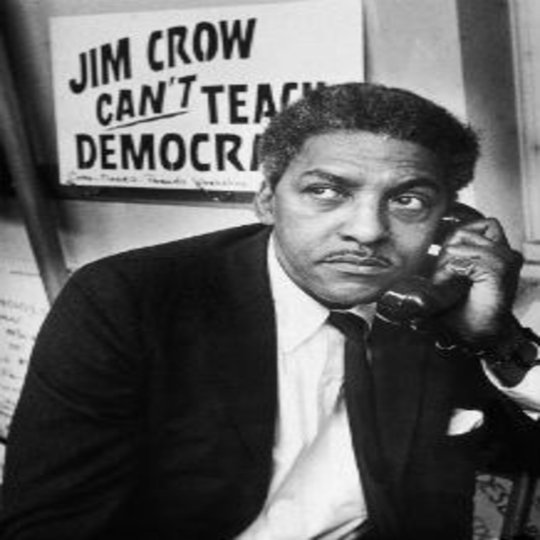
#black literature#black history#black tumblr#critical race theory#black theme#black entrepreneurship#new york
131 notes
·
View notes
Text
It is immensely difficult to understand just how completely white Southerners wrote off slaves in their political calculations. How, we ask, could they contemplate war without worrying about the possibilities it opened up to four million enslaved people? But so irrelevant were slaves to their thinking that William Yancey, the influential Alabama fire-eater, could recommend secession as a resolution of all the old struggles. It would augur, he said, a future with "no irrepressible conflict and no domestic enemy to incite our vigilance." Black Republicans--that is to say, white Northern men and not slaves--were the domestic enemy Yancey had in mind.
Southerners of all political persuasions worried publicly and to good effect about the way abolitionists incited slaves to violence. One can readily discern the heavy weight of racial thinking about people of African descent. It was hard for white Southerners to think of slaves as "the enemy within." More than thirty years of proslavery training had mostly dissuaded them from that view. But the fear lurked just below the surface, and a benevolent paternalism always confronted a deeper antagonistic view. One can hear their conflicting emotions when white Southerners learned of John Brown's attempt to raise slave support in his raid on Harper's Ferry. One contributor to the Charleston Mercury opened with a brave denial that planters had anything to worry about at all--"they would as soon suspect their children of conspiring against their lives"--but descended quickly into a tortured consideration of circumstances in which slaves might indeed pose a threat. When "constantly tampered with," the writer fretted, faith in the Africans' good nature could prove a flimsy defense. "Our negroes are constantly tempted to cut our throats or pink us" with rifles. It was well to be prepared for the worst. Those "foot peddlers" from New York trolling the neighborhoods could "put the devil in the negros' heads," and could have been down there already "for all we know, arming the troops." The conflicted view of slaves' nature was palpable but controlled. Slaves were said to be, by nature, good, childlike, and loyal servants to their masters; they posed a danger only when white outsiders attempted to "rouse an ignorant people [by appealing] to their superstition and lust." Thus when secession dispensed with the Black Republicans, as Yancey promised, slaves would no longer represent a force of any sort.
[...]
African slaves in New World societies underwent a process of instrumentalization rather than simple suppression or exclusion. White Southerners were so deeply implicated in that process that they had great difficulty shaking an instrumentalist view of African American people even when confronted with evidence to the contrary. Rare, indeed, was the commonsense observation like that of Waltman Willey, a western Virginia Unionist, who, disparaging the secessionists' argument that slavery would be safer out of the Union, asked bluntly what the consequences of destroying the Union would be: "What then. The common national obligation [to return fugitive slaves] is destroyed. Will not the negro find out? The motives to flee across the line would be increased, because he would know that whenever he crosses that line he will be free." What Willey predicted was precisely what most white Southerners denied: that slaves had motives and interests entirely their own, channels of communication that kept them apprised of relevant developments, and allies whose help they knew to seek. It would take Confederates a long time to learn those lessons.
stephanie mccurry, confederate reckoning: power and politics in the civil war south
#the thing is that people dehumanize other to the point of complete delusion so often throughout human history without interruption#and i just.... find it so so so so satisfying..... to spend time contemplating a time it turned out to fucking bite them in the ass#they really convinced themselves they were god kings of the world. and the world proved them wrong.#you just almost never get to see that. you almost never get to see this kind of shit and know#that there came a point where these losers had to confront how wildly wrong they had been.#confederate reckoning#bookblogging#media 2k24
79 notes
·
View notes
Text
The Gullah people are descendants of African slaves who live primarily on the Sea Islands and coastal regions of South Carolina, Georgia, and parts of Florida and North Carolina. Brought to the region from West Africa in the 18th century for their agricultural expertise, especially in rice cultivation, they developed a unique culture influenced by their African heritage and isolation from the mainland due to the region's geography.
Their language, also called Gullah, is a Creole blend of English and various West African languages. It serves as both a functional means of communication and a cultural link to their African roots. Gullah culture is renowned for its vibrant traditions, including storytelling, spiritual practices, cuisine, and folk arts like basket weaving, which have been preserved over generations.
The Gullah culinary tradition—characterized by ingredients like rice, seafood, and okra—is a foundation of Southern soul food. Additionally, Gullah music, spirituals, and dance have significantly influenced broader African American culture.
Today, the Gullah/Geechee Cultural Heritage Corridor, established by Congress, protects and promotes Gullah heritage. Despite pressures from land development, the Gullah people continue to celebrate and preserve their history, representing a profound connection between African and American cultures.
40 notes
·
View notes
Note
Hello! I've been enjoying your writing references and notes, thank you for sharing! I was wondering, do you have any for something set during the Civil War? I've been sitting on the idea of writing a short story inspired by Little Women and I want to do it some justice at least. I would be happy with whatever you can offer <3
Writing Notes: The American Civil War
A four-year war (1861–65) between the United States and 11 Southern states that seceded from the Union and formed the Confederate States of America.
The two sides fought over the enslavement of African Americans and the rights of individual states.
The economy of the South relied on enslaving Black people to work on plantations of cotton and tobacco, while in the industrialized North, public opinion was in favor of ending slavery.
The war ended in 1865 with a Union victory.
THE UNION AND THE CONFEDERACY

By February 1861, 7 southern states (South Carolina, Mississippi, Florida, Alabama, Georgia, Louisiana, and Texas) had broken away from the rest of the US.
On 4 February, they agreed to form a separate government, the Confederate States of America.
The first shots of the war were fired at Fort Sumter in South Carolina on 12 April, and within 3 months, Virginia, Arkansas, North Carolina, and Tennessee had joined the Confederates.
23 states remained in the Union, including the slave-owning “border states”.

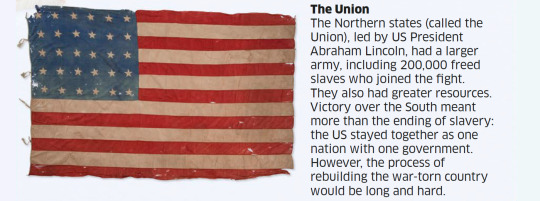
NEW TECHNOLOGY
The US Civil War was one of the first industrial wars in history, making use of modern technologies developed during the course of the 19th century. The war was fought across a wide area, so railways were critically important in carrying troops and supplies to where they were needed on the front lines. Generals were able to communicate with each other by telegraph.

Weapons. Fast-firing repeating rifles, such as the Spencer rifle, were used for the first time in the Civil War. The widely used “Napoleon” field gun could hit a target up to 1,600 m (5,250 ft) away. Also developed at this time was the Gatling gun, an early machine gun.

Ironclad battleships. Steam-powered battleships protected by iron or steel plates were known as ironclads. The first-ever battle between ironclads was fought in the Civil War in 1862, on the James River estuary in Virginia.

Modern Communications. In the Civil War, railroads moved troops around, aerial balloons spied across enemy lines, and the telegraph (above) sent and received instant information. Its receiver machine recorded messages on paper tape in Morse code, which uses dots and dashes to represent numbers and letters of the alphabet.
WAR PHOTOGRAPHY

The Civil War was one of the first conflicts to be extensively photographed. Dozens of photographers toured the battlefields, and their stark images of soldiers, dead and alive, brought shocking scenes of the war to the public around the world.

A Continental War. Most of the fighting in the war took place in Virginia, Maryland, and Pennsylvania in the east. There were also battles in Kentucky and Tennessee in the west and down the Mississippi River to New Orleans. In 1864, General William T. Sherman (above) conducted a major campaign in Georgia and the Carolinas.
TIMELINE
A nation divided. When 7 US states seceded (broke away) from the Union to form the Confederacy, President Lincoln refused to recognize the new government, and called on them to rejoin the Union. The Confederates refused, and tried to gain control of federal forts in the south. The stage was set for a bloody war that would last for the next 4 years.
12 April, 1861: Fort Sumter attacked. Confederate troops under Brigadier General Beauregard fired on Union soldiers who were guarding Fort Sumter in Charleston, South Carolina. These were the first shots to be fired in the Civil War.
17 September, 1862: Battle of Antietam. The bloodiest day of fighting in the entire war took place at the Battle of Antietam, in which nearly 23,000 soldiers were wounded or killed. The Union army suffered the most casualties, but managed to halt the advance of General Robert E. Lee’s Confederate forces into the Union state of Maryland. The next day Lee was allowed to lead his shattered army back to Virginia.
13 December, 1862: Confederate victory. Fortune swung back to the Confederate side at the Battle of Fredericksburg, in Virginia. General Burnside, newly appointed by Lincoln to command the Union army, led 120,000 troops to attack a Confederate force of 80,000 – by far the largest number of men to meet in any conflict of the Civil War. Burnside was decisively defeated – a victory that gave fresh hope to the Confederates and led to complaints that the Union’s generals were doing a bad job.
1 January, 1863: All slaves to be free. President Lincoln gave new purpose and direction to the war by issuing the Emancipation Proclamation. This was an order freeing all slaves in the Confederate states. Of course, this could not happen until the Union had won the war against the Confederates, but his words would eventually lead to the freeing of millions of African American slaves.
3 March, 1863: First African-American regiment. The first official regiment of African-American soldiers, the 54th Massachusetts Infantry Regiment, was formed to fight in the Union army.
4 July, 1863: Vicksburg captured. Union troops captured the Confederate fortress of Vicksburg, on the Mississippi River, after a 2-month siege. It was a major turning point in the war, coming a day after the Union victory at Gettysburg. The Union now controlled the length of the Mississippi River, dividing Louisiana, Texas, and Arkansas from the rest of the Confederate states, and cutting off supplies.
15 November, 1864: March to the Sea. The capture of Atlanta in Georgia by Union General William T. Sherman in September was a heavy blow to the Confederates. Although deep inside enemy territory, Sherman decided to march his army all the way from Atlanta to the coast at Savannah. He ordered his men to live off the land and destroy farms and factories on their way. This brutal “scorched earth” policy inflicted lasting damage.
9 April, 1865: Lee surrenders to Grant. The Confederate capital of Richmond, in Virginia, fell on 3 April. The Virginian Confederate army was exhausted. To avoid further losses, Confederate General Robert E. Lee surrendered to General Ulysses S. Grant at Appomattox Court House in Virginia. By May, all the Confederate armies had stopped fighting. The war was finally over.
14 April, 1865: Assassination of Lincoln. President Lincoln was shot while attending a play at Ford’s Theatre in Washington, DC. He died the next morning. A funeral train took 14 days to transport his body back for burial in his hometown of Springfield, in Illinois.

The Battle of Gettysburg. The most famous battle of the Civil War was fought over three days, from 1 to 3 July 1863, around the small town of Gettysburg in Pennsylvania. The Confederates attacked, confident they would win, but the Union army did not give way and eventually won. The battle had the heaviest casualties in the war. An estimated 51,000 soldiers were killed, wounded, or listed as missing. Four months after the battle, President Lincoln visited the site and delivered a famous speech known as the Gettysburg Address. In it, he said that the US was “dedicated to the proposition that all men are created equal”.

The Abolition of Slavery. On September 22, 1862, President Lincoln issued the Emancipation Proclamation, which freed all enslaved people in the Confederacy from January 1, 1863. In 1865 Congress passed the 13th Amendment (law change) to the US Constitution, making slavery illegal across the soon-to-be reunited country.
RECONSTRUCTION

African Americans Voting in Richmond in Virginia, 1871
The slow process of rebuilding the economy of the south, left in ruins after the war, is known as Reconstruction. Before rejoining the US, each state of the Confederacy had to agree to amendments to the US Constitution – the supreme law of the nation – that ended slavery, granted citizenship to African Americans, and gave the vote to all male citizens.
Reconstruction ended in 1877, and many southern state governments immediately reversed the new rights given to African Americans, making it hard for them to vote, go to school, or find paid work. They introduced laws that legalized discrimination against Black people that remained in place for almost a century.
Below are objects that serve as evidence of the turmoil leading up to the election and the events that happened immediately after.
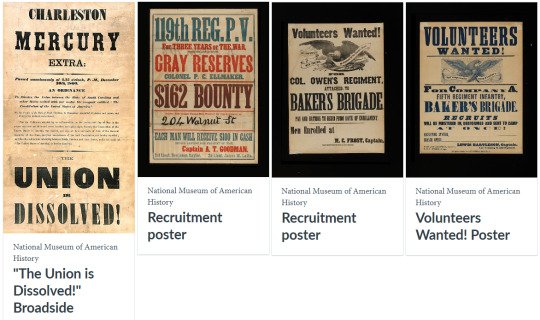

Below are objects that show how the Union and the Confederacy dealt with money problems, while also exploring what was considered money then and who produced it.


The objects below belonged to the men and boys who fought on the front lines for both Confederate and Union forces. They represent what soldiers wore, what they ate, how they coped, and what they held dear to them. These items, more often than not, were the only possessions soldiers kept while enlisted; on many are personal touches added by the owner.


Below are a few objects used as weapons by both Confederate and Union armies.

Below are a few objects used by or presented to the leaders of Union and Confederate forces.

For many Americans, both civilian and military, who lived through the conflict, the Civil War was the monumental event of their lifetime. They collected relics as they adjusted to the immediate consequences of the war. The nation grappled with the residual effects of the Civil War for more than a century. Below are objects that evoked different memories from the war.

Sources: 1 2 3 4 5 ⚜ More: Notes & References
It's nice to hear this, thanks so much! <3 Hope these notes help as quick references. Further research might be needed if you're planning to write something more detailed.
#anonymous#writing reference#history#writeblr#dark academia#spilled ink#creative writing#writing inspiration#writing notes#writing prompt#light academia#lit#literature#writing#writing resources
24 notes
·
View notes
Text
Lomwé and Macua communities in Mozambique’s Zambezia province traditionally harvest wild mushrooms to eat alongside staples like cassava. Conservationists are working with hundreds of indigenous women there to commercialize the sale of mushrooms like the vivid orange Eyukuli (Cantharellus platyphyllus) as part of a wider strategy to protect forests surrounding Gilé National Park.
The mushrooms are harvested in a 55,600-hectare (137,400-acre) buffer zone surrounding the national park during the height of the Southern African country’s wet season, from November to April. After harvesting, the fungi are cleaned, dried, and transported by road to Maputo, the capital, more than 2,000 kilometers (1,200 miles) away. There, they’re packaged and sold under the trade name Supa Mama.
This is the first time that native Mozambican mushrooms have been commercialized in the country.
Gilé covers an area of 286,100 hectares (707,000 acres), much of this covered in miombo woodlands that include tree species, like those from the Brachystegia genus, whose roots host mycorrhizal fungi. These underground networks help the trees absorb nutrients and moisture, and announce their presence in the form of diverse fruiting bodies above the ground: mushrooms.
Providing an economic incentive to protect the trees could be key to leaving them standing while promoting the wild mushroom harvest, says Alessandro Fusari...
Communities living around Gilé harvest at least 46 species of mushroom for local consumption. These include eyukuli, the trumpet-shaped khaduve (Lactifluus edulis), and the broad-capped namapele (Lactarius densifolius). So far, a total of five species are being harvested and packed for commercial sale under the project.

Pictured: Cantharellus platyphyllus (called Eyukuli in Lomwé) is one of 46 wild mushroom species Indigenous women harvest.
“Slowly, the community, especially the women, are learning that keeping the trees standing means having a bigger production of mushrooms,” Fusari tells Mongabay. “Since they’re starting to see commercial results, more and more avoid cutting trees.”
The project, which is supported by the French Development Agency, is in its third year, meaning the team doesn’t yet have the hard data to determine its success. But, Fusari says, the reduction in tree cutting “is a clear trend that is happening.”
Mushroom harvesting around Gilé is typically done by women while out doing other tasks, such as gathering firewood. The mushroom project works with 900 or so members of 30 women’s groups drawn from communities living in the national park’s buffer zone.
Gilé National Park is home to animals that include buffalo, wildebeest, sable, waterbuck, and around 50 elephants. Many of these animals were reintroduced from other areas to rebuild the wildlife wiped out during Mozambique’s 1977-1992 civil war.
...Giving commercial value to something normally only collected for subsistence is part of a wider program to promote sustainable agriculture...
The teams collecting mushrooms have already been trained in sustainable harvesting methods. For instance, they cut rather than pull the mushrooms from the ground, to avoid damaging the mycelium, or root-like structure, beneath the surface; they brush the dirt off the mushrooms wherever they pick them, to leave as many spores there as possible; and the women carry their harvest home in open baskets, to allow spore dispersal along the way.
-via Good News Network, October 14, 2023. Based on reporting by Mongabay News, September 1, 2023.
#mozambique#mozambican#conservation#sustainability#national park#forest#forest conservation#mushrooms#fungi#wild fungi#mycorrhizal fungi#mycorrhizal network#sustainable agriculture#agriculture#good news#hope#mycelium#mushroom hunting#mycology#deforestation#also very cool info about sustainable mushroom harvesting tbh
222 notes
·
View notes
Text
Mozambique's government confirmed on Tuesday (Feb.27) that tens of thousands have been driven from their homes by a wave of jihadist attacks in the restive north.
The cabinet spokesman said 67,321 people had fled the armed attacks in recent weeks in Cabo Delgado province.[...]
The government has so far rejected calls for a state of emergency.
In recent weeks, terror group Islamic State has claimed several attacks and fatalities, especially in the south of Cabo Delgado province, after several months of calm.
According to an updated published Tuesday by the UN Office for the Coordination of Humanitarian Affairs, a total of 71,681 people have been displaced since 22 December due to attacks or fear of attacks by non-State armed groups. 69 per cent of the displaced being women and children.
The Cabo Delgado province has been facing attacks for six years. Since July 2021 troops from Rwanda and the Southern African Development Community are deployed in support of the Mozambican army.
28 Feb 24
50 notes
·
View notes
Text
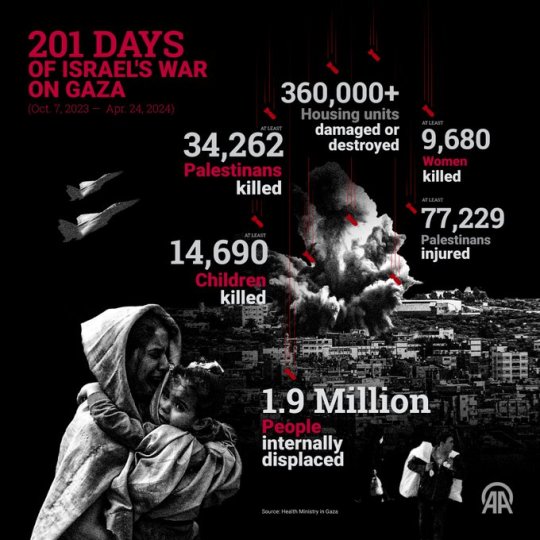
[ 📹 Scenes of the massive devastation wrought on Khan Yunis, a city in the southern Gaza Strip, following months of Israeli bombardment, in addition to an invasion by the Israeli occupation forces (IOF), and their eventual withdrawal from the city. 📈 The death toll continues to rise in the Gaza genocide, now with an official count of over 34'262 Palestinians killed, while another 77'229 have been wounded over the previous six months.]
🇮🇱⚔️🇵🇸 🚀🏘️💥🚑 🚨
MASSIVE BOMBING IN GAZA CAUSES MASS DISPLACEMENT, SOUTH AFRICA DEMANDS INVESTIGATION INTO MASS GRAVES ON 201ST DAY OF GENOCIDE
On the 201st day of "Israel's" ongoing special genocide operation in the Gaza Strip, the Israeli occupation forces (IOF) committed a total of six new massacres of Palestinian families, resulting in the deaths of no less than 79 Palestinians, mostly women and children, while another 86 others were wounded over the previous 24-hours.
Gaza's Ministry of Health added that ambulance and paramedic crews are still unable to reach many of the victims of the Israeli occupation's bombing and shelling, with many bodies remaining trapped under the rubble or strewn across Gaza's streets.
Following the discovery of hundreds of decomposing corpses of Palestinian civilians at the Nasser Medical Complex in Khan Yunis over the last several days, the South African Department of International Relations and Cooperation (SADIRC) called for "comprehensive investigations to ensure justice and accountability."
“Israel continues to disregard the rulings by the International Court of Justice (ICJ) and UN resolutions unabated amid the unrelenting bombardment of Gaza, particularly the ICJ’s ruling which granted South Africa’s urgent request of March 6 for further provisional measures to prevent Israel from causing irreparable harm to the rights invoked by South Africa under the 1948 Genocide Convention in respect of the ongoing siege of Gaza,” the department said in a statement on Wednesday.
The department lombasted the Israeli occupation's failure to comply with orders given by the International Court of Justice at The Hague (ICJ), in the Netherlands, where South Africa accused the Zionist entity of "acts of genocide," leading the ICJ to order provisional measures to ensure Palestinian's right to life, basic healthcare services, and basic needs like food and potable water.
South Africa said the lack of accountability for the Israeli occupation has become increasingly clear, pointing to comments made by the United Nations Special Rapporteur that "Israel's" war on the "right to health" of Palestinians has resulted in the obliteration of Gaza's healthcare system.
“We further concur with the UN’s special rapporteur on the situation of human rights in the Palestinian territories, Francesca Albanese, when she recently highlighted the continuation of Israel's impunity and exceptionalism is no longer viable, especially in light of the binding UN Security Council resolution 2728 which called for an immediate ceasefire in Gaza."
“In this respect, we call on the international community to act to bring the perpetrators to justice and ensure accountability for the victims and their families," the department added.
On top of South Africa's demands for an International investigation into the Nasser hospital massacre, the United Nations Human Rights High-Commissioner, Volker Türk, also called for an independent investigation into reports mass graves found at Nasser and Al-Shifa Hospitals, saying there needs to be "independent, effective and transparent investigations into the deaths."
"Given the prevailing climate of impunity, this should include international investigators," Türk said, adding that "hospitals are entitled to very special protection under International humanitarian law. And the intentional killing of civilians, detainees and others who are hors de combat is a war crime."
In other news, the German Foreign and Development ministries issued a joint statement on Wednesday in which they stated that Germany intended to resume funding for the United Nations Relief and Works Agency for Palestine, more commonly known as UNRWA.
Previously, authorities with the Israeli occupation accused the aid organization of employing Palestinians with connections to Hamas and the Resistance's deadly attacks on illegal Israeli settlements and military bases lining the Gaza Strip on October 7th, 2023.
"The German government has dealt intensively with the allegations made by Israel against UNRWA and has been in close contact with the Israeli government, the United Nations and other international donors," the two departments said in their statement.
The German government said their concern stems from the fact that other International aid organizations were dependent on "UNRWA's operational structures" in Gaza, adding that ensuring humanitarian aid reached the enclave was "more important than ever" given the current situation.
The German government also urged UNRWA to implement recommendations made in a report following a German investigation into the claims which identified "neutrality issues" at the aid organization.
"In support of these reforms, the German government will soon continue its cooperation with UNRWA in Gaza, as Australia, Canada, Sweden and Japan, among others, have already done so," the joint statement added.
While the international community called for investigations into mass graves and renewed funding for UNRWA, the Hebrew media published reports stating that authorities with the Israeli occupation forces (IOF) have conducted all the necessary preparations for an invasion of Rafah, claiming they were ready to launch the operation at a moment's notice upon the occupation government's approval.
The occupation army added that it would begin ground operations in Rafah "very soon," starting with the evacuation of over 1.4 million Palestinians packed into the city, having been displaced by the occupation's genocide from various sectors of the Gaza Strip.
A report in the Hebrew media said the plan would begin by forcing over a million Palestinians to evacuate over the next four to five weeks, herded into tent complexes that they claim have been erected by "International aid organizations," a plan the Israeli occupation says it presented to its allies and other agencies in the region.
Subsequently, the plan will move forward in several stages, based on a "regional division" into defined areas, where at each stage, the Israeli occupation army will "inform the local population" before making advances, giving the Palestinian population a chance to evacuate.
The IOF also announced on Wednesday the recruitment of two reserve brigades to "continue the defense and attack mission in the Gaza Strip under the command of Division 99."
According to a report on the occupation's plans, the 2nd Reserve Brigade of the 146th Division, along with the 679th Reserve Brigade belonging to the 210th Division, will be transferred from the north of the occupied Palestinian territories, near the border with Lebanon, to the Gaza Strip.
Meanwhile, the slaughter in the Gaza Strip continues to escalate, with a deadly renewal of the occupation army's bombardment on the northern Gaza Strip, in addition to various sectors of the enclave.
Occupation Forces demanded that residents of Beit Lahiya, a town in the northern Gaza Strip, leave their homes and migrate towards Gaza City and the Jabalia Refugee Camp, where six months of intense bombardment has left both the ancient city and refugee camp in ruins, beginning a whole new exodus of displaced Palestinian families.
Around 50'000 Palestinians had just returned to their damaged homes, hoping to rebuild, only to be told a short time later that they would have to evacuate once again, under threat of Israeli slaughter and bombardment.
At the same time, Zionist warplanes launched a series of firebelts on Beit Lahiya, demolishing large numbers of civilian homes, as well as a mosque, killing at least three civilians and wounding many others, while occupation artillery shelling concentrated on the town of Beit Hanoun, also in Gaza's far north.
Additionally, occupation fighter jets bombed a residential home belonging to the Dardouna family in the Al-Salam area, east of Jabalia, while yet another bombing of the Shteiwi family home in the Al-Zaytoun neighborhood, southeast of Gaza City, resulted in the deaths of two Palestinians and also wounded a large number of civilians.
Several civilians were also wounded following a strike on the Al-Shujaiya neighborhood of Gaza City, when an IOF reconnaissance aircraft fired a missile which fragmented upon its explosion, hitting a number of Palestinians who were on the ground at the time.
Occupation warplanes also demolished the Al-Raed Tower in a firebelt on Al-Jalaa Street on Tuesday night.
The Zionist bombardment also hammered the central Gaza Strip overnight, with an occupation airstrike targeting a gathering of civilians near the Hyper Mall in the Nuseirat Refugee Camp, resulting in the deaths of four Palestinians, while yet another strike targeted agricultural land in the Trans Al-Baba area of Al-Zawaida.
Occupation artillery forces also shelled the eastern neighborhoods of the Al-Bureij Refugee Camp, while another air raid targeted the vicinity of the Al-Salhi Towers in the New Camp, north of Al-Nuseirat. Similarly, two more additional raids targeted the Wadi Gaza area.
In Khan Yunis, Civil Defense crews continued to recover the bodies of those killed and dumped into mass graves by the IOF at the Nasser Medical Complex, announcing on Wednesday morning the discovery of 51 additional bodies of various ages and categories, 30 of whom had been identified, while the rest remain unknown.
This brings the total number of bodies discovered at the Nasser complex to 324, while 9 more bodies were recovered from various areas of Khan Yunis.
In the meantime, occupation forces bombed a residential building belonging to the Al-Bahasba family east of Rafah City, in the southern Gaza Strip, killing at least three civilians, including a father and his two sons.
As a result of "Israel's" ongoing special genocide operation in the Gaza Strip, the death toll among the population of Gaza has now risen to exceed 34'262 Palestinians killed, including over 14'690 children and 9'680 women, while another 77'229 others have been wounded since the start of the current round of Zionist aggression, beginning with the events of October 7th, 2023.
April 24th, 2024
#source1
#source2
#source3
#source4
#source5
#source6
#source7
#videosource
#graphicsource
@WorkerSolidarityNews
#gaza#gaza strip#gaza news#gaza massacre#war in gaza#genocide in gaza#genocide#israeli genocide#israeli war crimes#war crimes#crimes against humanity#israel#israeli occupation forces#israeli occupation#palestine#palestine news#free palestine#palestinians#end the occupation#israel palestine conflict#war#middle east#politics#news#geopolitics#world news#global news#international news#breaking news#current events
35 notes
·
View notes
Text
Look at the war
(can also maybe apply to the main timeline if you want)
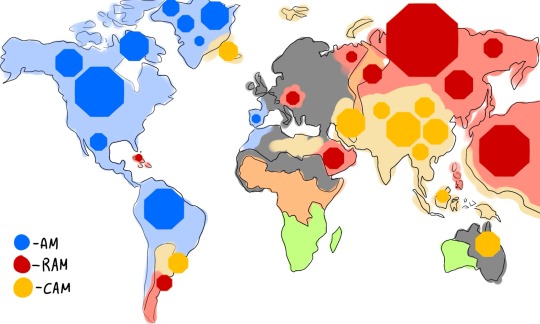
(Very rough/sketch of the idea, mainly showing the places of the AM megastructures and honey-combs)—Takes place the height of the war—
During the war many countries fell/surrendered and got absorbed into the larger powers. Listing the different areas/territories by colour (all super brief here):
Blue — USA (new name not decided, give a suggestion if you want), was very quick to take over Canada and a large portion of South America. The AM megastructures tend to be the largest and most complex on their main land, even where the structure isn’t directly, large pipes and cables all throughout the country are visible. Due to this, a rapid industrialisation has happened and there are very few rural areas left. America’s population (like most of the other places) is also experiencing a decline. The air is extremely polluted and when close to the megastructures it’s said that the smell of burning and rotting flesh is very potent. The remaining population either remains constantly inside, moving around through tunnels, or permanently underground in the new lower cities. Notably radical religious organisations have become more frequent due to the war, mostly due to people supposedly disappearing in their sleep without a trace.
Red— Russia has the largest Megastructure, however due to this, it faces the most attacks. One structure notably, was built small in the ocean yet over time it grew and built itself and the area around it up, creating a false floating continent. However it is due to its creation that a large population of sea life has been erratic and floods that wiped out many coastal cities and communities. Much like America very few rural areas remain, and due to extreme climate change caused by the war, the area faces even harsher and year long winters that have spread to the rest of Europe.
Yellow— China. The AMs (CAM) are very close together here and have been designed in such a way that people are able to live within them. Due to their general closeness to each other they tend to function better in self-protection than the other AMs. It is constantly building, more and more structures as opposed to constantly developing a single one. Within China a few rural and farming communities have been preserved, however due to such a fact, those areas in particular have become targets—especially to RAM.
Orange— These are actively hostile territories (well everywhere is hostile), but life is still found. Camps are usually found scattered, yet still alined to one of the powers. Mostly these are unclaimed territories that are being fighted for.
Grey— Dead zones. Areas so destroyed and ruined by the war that they near uninhabitable and been stripped dry of resources. This is where most of the fighting has happened, in what used to be Central Europe. Majority of the people who were there are dead or have been displaced (mostly in Russia and China, with the luckier ones making it to the Common Wealth of Southern Africa) The remaining people are scattered and can be found within underground shelters. These shelters are horrific places, with few supplies, little food, and constant sickness. The people are actively hunted by all the AMs. Notably Naomi is from one of these bunkers, having been forced into one at the age of two. Nimdok too (when he was alive alreast).
Green— The commonwealth of Southern Africa (previously the African Commonwealth) A bit after the war began (post 1994) many African nations merged diplomatically in order to better conserve resources better and to be a better neutral force. However as the war progressed more and more of the continent was over taken. However in the process the remaining state has become a power in of its own. Creating a defences that work efficiently to keep the AMs out. It was chosen to sanction themselves from the world and the war. Truly wanting no part in it. Eventually Australia did join, before half was taken, but the remainder acts as a port and outlook. This is one of the few areas were “regular” human society is still found, with there being heavy laws and propaganda meant to block out information of the war. Previously they had been very open to refugees, however they would begin to refuse them as it had opened opportunities to the AMs. Ellen and Evan are both from here. Gorrister also hides within it, however he smuggles himself in and out constantly, as being a member of the peace core, he has work to do all over the remaining world.
Where everyone is from including the survivors of the og and love au:
—Gorrister from England however he fled to America, then to COSA, and eventually to Russia where he would help develop the BE virus.
-Ted, Tiffany, and Gloria are all from the USA, however Ted is an average citizen, Tiffany is a member of one of the religious groups, and Gloria is a high ranking military commander, government official and one of the reasons of AM’s existence.
-(idk where Benny is from, can’t decide lol, same with Becky)
-Nimdok and Naomi are from different parts of Europe but both find themselves in the survival bunkers
-Ellen and Evan (being siblings) are from COSA, being born where Zimbabwe used to be. Evan however would go onto explore the rest of the state, mainly in the area where South Africa had once been. Ellen would stay closer to home. (Reason as to why is that in the original and audio drama, Ellen frequently refers to life before AM, and rarely mentions the war, which could mean she either doesn’t think about it or knows very little of it)
(There’s like no world lore in the og and whilst that is kinda the point, I just wanted to build on it a little. Will be posting some concept art for this stuff soon. As usual if you have ideas or suggestions please share)
#i have no mouth and i must scream#ihnmaims#am ihnmaims#ted ihnmaims#ihnmaimsloveau#alternate reality#ellen ihnmaims#harlan ellison#gorrister ihnmaims#ihnmaims am#ihnmaims ted#ihnmaims game
48 notes
·
View notes
Text
“The Great Depression reached into every corner of the country, but it did not affect all people equally. For many middle-class women of all races, the depression required certain changes in spending patterns: buying cheaper cuts of meat, feeding the homeless men who stopped at the back door, and doing without new clothes. Some of these women continued to do community volunteer work, raising money for the unemployed. They saw the food lines, but they did not have to join them.
Among women workers, race played an important role. The fierce competition for jobs fueled racial resentments. Mexican-American and African-American women were the first to lose their jobs and the last to get relief from welfare agencies. Often, they were already living on the margin of survival. Before 1933, when the Prohibition amendment making the manufacture or sale of alcoholic beverages illegal was repealed, many of these women turned to bootlegging, making their own beer or liquor and selling it.
…Even relatively prosperous farm women--owners, not tenants--in general produced as much as 70 percent of what their families consumed in clothing, toys, and food. They not only gardened but raised poultry. During the depression, women increased the size of their gardens and the number of their hens. They made more butter from their dairy cows and sold it. They cut up the sacks that held large amounts of flour and sewed them into underwear. In the previous decade, they had proudly begun to participate in a culture of store-bought goods. Now they began to can food again. Government agents dragged huge canning kettles across the mountains of northern New Mexico and eastern Tennessee so that women in remote farming villages could preserve their food.
Even with all this work, rural children suffered from malnutrition, and rural women faced childbirth without a doctor or midwife because they could afford neither the medical fees nor the gasoline for transportation. The women resented their declining standards of living, particularly those from better-off farm families who owned their own farms and had, during the 1920s, aspired to participate in the new domestic technology of indoor bath-rooms, modern stoves and heating, and super cleanliness.
…In 1936, a federal appeals court overruled an earlier law that had classified birth control information as obscene and thus illegal to dispense. That decision still left state laws intact, however. The number of birth control clinics nationwide rose from 55 in 1930 to 300 by 1938, but in some states and in many rural areas women still had no access to birth control. In 1937, North Carolina became the first state to provide contraceptives with tax dollar, and six others soon followed. Ironically, North Carolina’s reasoning was not that birth control was a human right but that birth control would reduce the black population.
Despite statistics showing that black women had fewer babies than white women with similar incomes and living situations, many white southern officials in states with large black populations feared a black population explosion. In 1939, the Birth Control Federation of American responded to eager southern state governments by developing “The Negro Project,” a program to disseminate birth control information, which they carefully staffed with local black community leaders. Whatever the logic, one quarter of all women in the United States in their 20s during the depression never bore children. This was the highest rate of childlessness for any decade. Many people simply decided not to get married, and marriage rates fell.
…In the mass media women seemed to be receiving mixed messages. On the one hand, in 1930, the Ladies’ Home Journal featured a former career woman confessing, “I know now without any hesitation… that [my husband’s job] must come first.” In 1931, the popular magazine Outlook and Independent quoted the dean of Barnard College, a women’s college in New York City, telling her students that “perhaps the greatest service that you can render to the community… is to have the courage to refuse to work for gain.” And on its front page in 1935, the New York Times reported that women “suffering from masculine psychological states” and an “aversion to marriage” were being “cured” by the removal of their adrenal gland. In this atmosphere, not only were women workers under fire, but women who centered their lives on women rather than on men came under attack. Lesbianism was no longer chic. Lesbian bars almost disappeared. Homosexuality was now seen by many people as just one more threat to the family.
On the other hand, movie houses showed zany screwball comedies with more complicated lessons. Often deliciously ditsy, incompetent women were rescued by sensible, capable men. Yet, the men in these movies were frequently portrayed as bumbling or slower-witted than the women. Sometimes the men were people who needed joy and whimsy restored to their lives, not an unexpected theme for a nation in the throes of an economic depression. In other movies, however, women were by no means incompetent. The women portrayed by Katharine Hepburn, Bette Davis, and Joan Crawford in the 1930s were often intelligent but needed men alternately to tame and to soften them.”
- Sarah Jane Deutsch, “Making Do with Disaster.” in From Ballots to Breadlines: American Women, 1920-1940
#sarah jane deutsch#1930s#race#gender#from ballots to breadlines#class#20th century#history#american
20 notes
·
View notes
Text

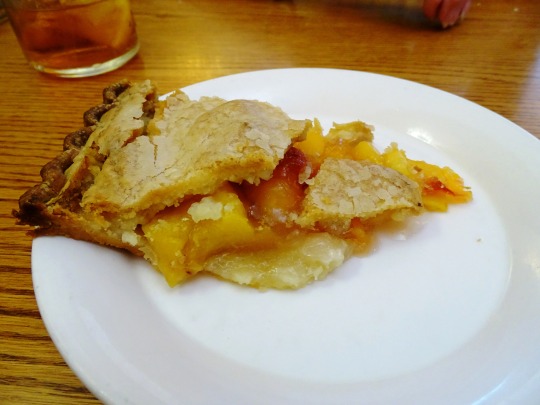


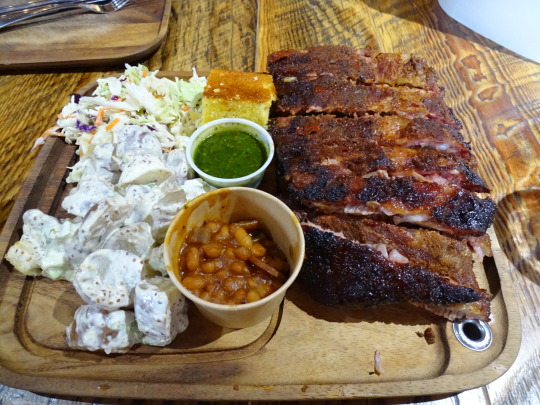
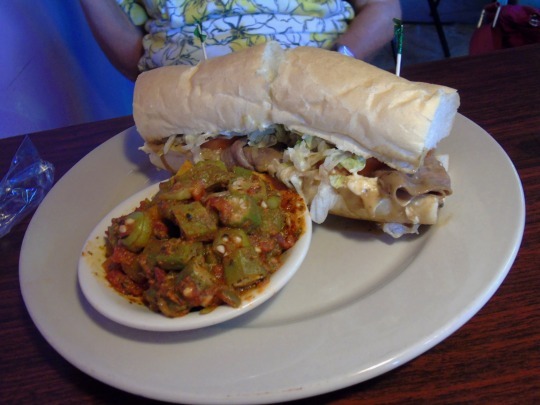








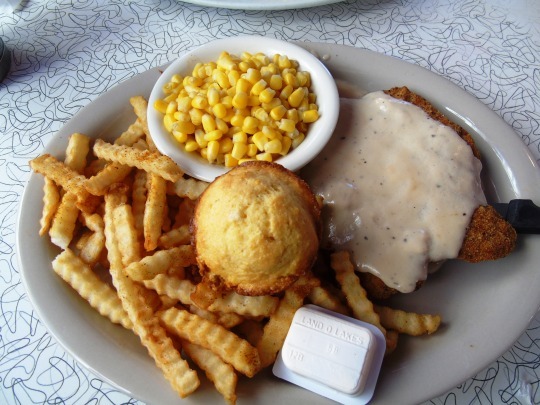
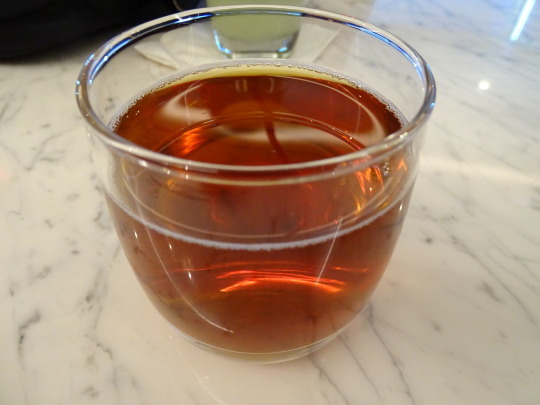
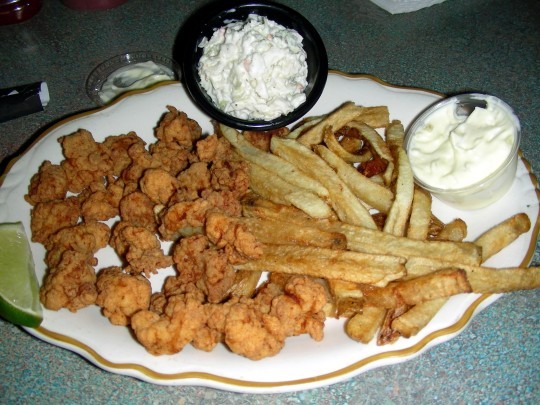

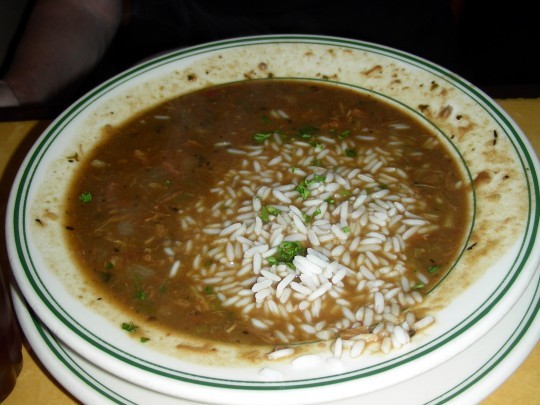
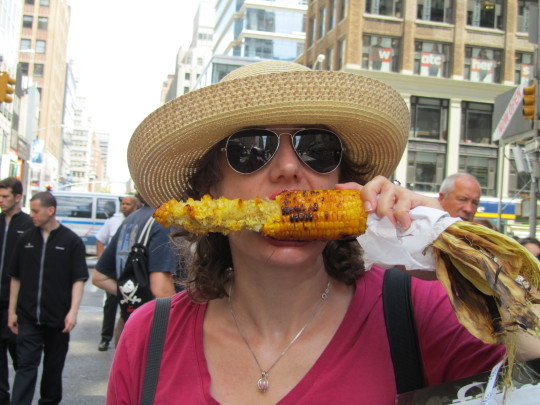
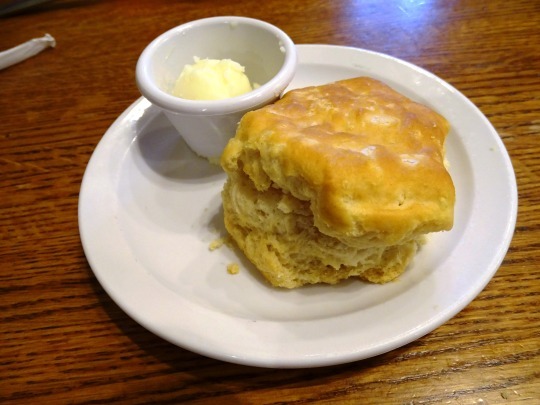
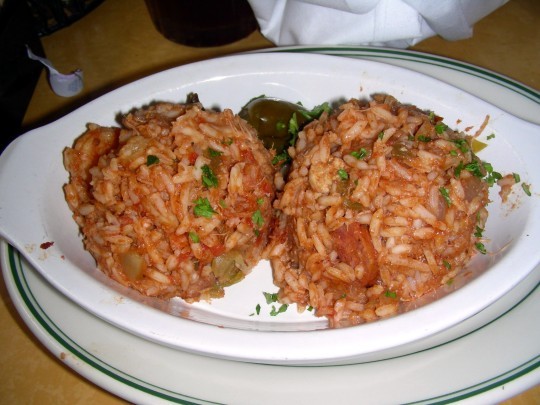

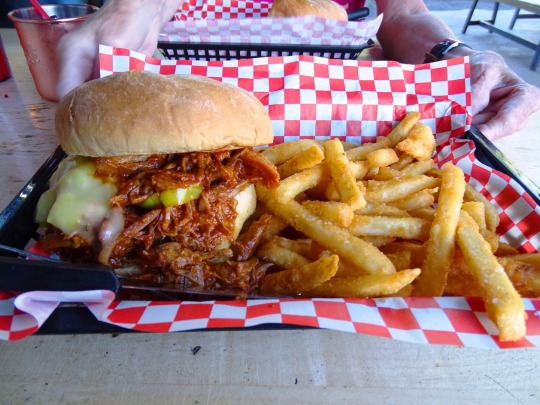

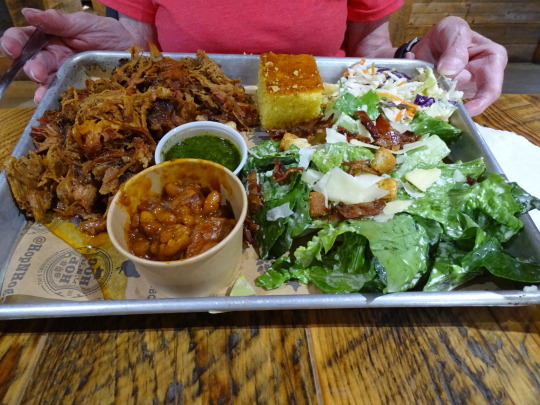

Southern Food Heritage Day
Every year, Southern Food Heritage Day is celebrated on October 11. The Southern Food & Beverage Museum celebrates the culturally rich and delicious food of the Southern States in America. The cuisine deserves to be recognized and celebrated officially because it is a testament to American history and legacy. Southern food also represents the essence of America — the coming together of a variety of people from all over the world, each bringing with themselves their own ingredients and recipes to create a unique cuisine. Iced tea, pickled shrimps, and fried chicken are some of the most loved Southern foods throughout history. Along with the cuisine, the day also celebrates the racial and ethnic diversity in America.
History of Southern Food Heritage Day
Southern Food Heritage Day celebrates the best that Southern food and beverages have to offer. The South’s cuisine in America can be found in the historical regional culinary form of states generally south of the Mason-Dixon line dividing Pennsylvania and Delaware from Maryland, along the Ohio River, and extending west to southern Missouri, Oklahoma, and Texas. The most notable influences on Southern cuisine are African, English, Scottish, Irish, German, French and Native American.
The food of the American South displays a unique blend of cultures and culinary traditions. The Native Americans, Spanish, French, and British have contributed to the development of Southern food, with recipes and dishes from their own cultures. Food items such as squash, tomatoes, corn, as well as certain cooking practices such as deep pit barbecuing, were introduced by south-eastern Native American tribes such as the Caddo, Choctaw, and Seminole. Many foods derived from sugar, flour, milk, and eggs have European roots. Black-eyed peas, okra, rice, eggplant, sesame seed, sorghum, and melons, along with spices, are of African origin.
Southern food can be further divided into categories: ‘Soul food’ is heavily influenced by African cooking traditions that are full of greens and vegetables, rice, and nuts such as peanuts. Okra and collard greens are also considered Soul Food, along with thick stews. ‘Creole food’ has a French flair, while ‘Cajun cuisine’ reflects the culinary traditions of immigrants from Canada. ‘Lowcountry’ cuisine features a lot of seafood and rice, while the food of the Appalachians is mostly preserved meats and vegetables. Southern food is partial to corn, thanks to the Native American influence.
Southern Food Heritage Day timeline
1860
Southern Diet Expands
Following the emancipation from slavery, the Southern diet becomes versatile.
1916
The Great Migration
African Americans travel from rural communities in the South to large cities in the North and West — they carry their cuisine with them.
1940s
Southern Foods in Restaurants
Southern foods start appearing on restaurant menus and appeal to a diverse clientele.
1964
Soul Food
This term, describing everyday Southern food, first appears in print.
Southern Food Heritage Day FAQs
What is the difference between Southern food and soul food?
The difference between soul food and Southern food is rooted more in class than race, and what families were able to afford to put on the table.
What is a typical Southern meal?
A traditional Southern meal is pan-fried chicken, field peas, greens, mashed potatoes, cornbread or corn pone, sweet tea, and a pie for dessert.
Why is Southern food so unhealthy?
The Southern diet is commonly high in processed meats, which are high in salt and in nitrates, which are in turn linked to heart risk. The high sugar content of the diet may also lead to negative effects, like insulin resistance and inflammation.
How To Celebrate Southern Food Heritage Day
Organize a cook-off: Gather all your friends and organize a cook-off on Southern Food Heritage Day. Revive old recipes or add a twist to create something new.
Go out for a meal: Enjoy the best of Southern foods at your favorite Southern foods restaurant. Don’t forget to enjoy the classics like fried chicken, hush pies, and pies.
Set up a barbecue: Barbecues are an integral part of the Southern food heritage. It is also one of the most popular styles of cooking. Barbecue your favorite meats and vegetables, and serve them with sauces and seasonings.
5 Facts About Southern Foods That Will Blow Your Mind
Redeye gravy has a unique recipe: Redeye gravy is made with pan drippings and leftover coffee.
It is more calorie-dense: Southern fried chicken breast typically has more than 400 calories in an ounce.
Peanut butter is an essential: Half the annual crop of peanuts is used to make peanut butter.
Collard green has been around forever: It’s been a part of our diet for more than 2,000 years.
Black-eyed peas are also good luck charms: It is believed that black-eyed peas bring good luck on New Year’s Day.
Why We Love Southern Food Heritage Day
A day to indulge: You cannot celebrate Southern Food Heritage Day without enjoying a hearty meal of your favorite foods. This is truly a day of indulgence!
Try something new: The best thing about Southern food is that it has something for everyone. Use this day to try a new food item or the cuisine of Southern heritage. Who knows, you might just discover your next favorite dish!
It is historically significant: Southern foods have a rich cultural and historical significance. Learn more about the origins of your favorite foods on Southern Food Heritage Day.
Source
#Peach Blackberry Cobbler#Peach Pie#Fried Chicken Sandwich#ice tea#Fried Chicken#collard green#Okra stew#Southern Food Heritage Day#USA#soul food#original photography#travel#vacation#restaurant#SouthernFoodHeritageDay#Coconut Cake#Shrimp and Grits#Hot Sausage Po'Boy#candied yam#Florida Gator Tail#Gumbo#Jambalaya#Pecan Pie#Chicken Fried#corn cob#Baby Back Ribs#11 October
7 notes
·
View notes
Text




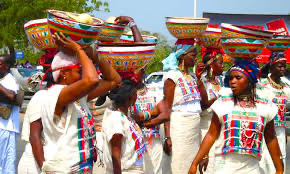
Remy ma is a member of the Hausa people

The Hausa (autonyms for singular: Bahaushe (m), Bahaushiya (f); plural: Hausawa and general: Hausa; exonyms: Ausa; Ajami: مُوْتَانَنْ هَوْسَ) are the largest ethnic group in West and Central Africa. They speak the Hausa language, which is the second most spoken language after Arabic in the Afro-Asiatic language family. The Hausa are a diverse but culturally homogeneous people based primarily in the Sahelian and the sparse savanna areas of southern Niger and northern Nigeria respectively, numbering around 54 million people with significant indigenized populations in Benin, Cameroon, Ivory Coast, Chad, Sudan, Central African Republic, Republic of the Congo, Togo, Ghana, Eritrea, Equatorial Guinea, Gabon, Senegal and the Gambia.
Predominantly Hausa-speaking communities are scattered throughout West Africa and on the traditional Hajj route north and east traversing the Sahara, with an especially large population in and around the town of Agadez. Other Hausa have also moved to large coastal cities in the region such as Lagos, Port Harcourt, Accra, Abidjan, Banjul and Cotonou as well as to parts of North Africa such as Libya over the course of the last 500 years. The Hausa traditionally live in small villages as well as in precolonial towns and cities where they grow crops, raise livestock including cattle as well as engage in trade, both local and long distance across Africa. They speak the Hausa language, an Afro-Asiatic language of the Chadic group. The Hausa aristocracy had historically developed an equestrian based culture. Still a status symbol of the traditional nobility in Hausa society, the horse still features in the Eid day celebrations, known as Ranar Sallah (in English: the Day of the Prayer). Daura city is the cultural center of the Hausa people. The town predates all the other major Hausa towns in tradition and culture.

#african#afrakan#kemetic dreams#brownskin#afrakans#africans#fitness#brown skin#african culture#afrakan spirituality#afrakan woman#tupac#kemet#deep reddish brown skin#epic video#africa#african spirituality#hausa#remy ma#Nigerian
251 notes
·
View notes
Text
Nearly 70 million people in southern Africa are suffering from the effects of an El Niño-induced drought, according to the Southern African Development Community, resulting in widespread food shortages and even forcing some families to eat grass seed. Zambia and Zimbabwe have declared the hunger crisis a state of disaster, while Lesotho and Namibia called for humanitarian support. In landlocked Malawi, the situation is particularly acute, with almost half the nation’s population — an estimated 9 million people — in need of humanitarian assistance, according to a UNICEF report. Half of those are children, as the worst midseason dry spell in over a century devastates a nation where over 80% of people rely on rain-fed agriculture.
8 notes
·
View notes
Text
I'm doing some political fixing to my Campoestela setting...
The main thing that was bothering me is how humans fit. Since this is a setting with multiple sentient species, each with their own civilizations and cultures (because I dislike the recent trend of human-only sci-fi setting, it's an intentional retro throw). However, the main thing here that allows such a diverse setting is the presence of diplomats/traders (because no universal translator!) and standarized equipment. Where did the latter come from, though? If there are older space civilizations than humanity, it must be humans who adapt to that standard, and I'm not nearly creative enough to build an entire alien technology set. If it was humans who "created" space civilization, it would mean they're way too important in the setting and I want humans just to be one civilization out of many.
My solution is that there would be a mix of both; humans have their own set of technology but they have adopted some alien tech and customs. This also throws me back to the early history of this setting. My idea is that humanity spread on its own on the Solar System, developing some standard space technology (perhaps there are equivalents of the Soyuz running around) before they invented FTL and added other alien standards to their own technological base. So human spaceships are similar and quite compatible, but they are very different to other civilizations. FTL is a whole discussion on itself, how did things come from big slow generation ships to aircraft-sized spaceships? I'll deal with that later.
Another thing I was never happy with was with the "Confederación Esteloplatense" thing, it's an ugly name (ironically it sounds better in English, Silverstar Confederation). OF COURSE there is a Space Argentina, and more accurately they are the descendants of the generation ship Esperanza, which had a mostly Argentine crew. But I've decided that, at least loosely, Argentina is part of a larger whole that includes the whole of South America or Latin America. I'm going to call it the Cruzur Union, the Union of the Southern Cross (Cruz del Sur). Rioplatenses, or Esteloplatenses, are just one nation inside of this wider... nation.
To see it from a wider perspective now, I'm picturing humanity in Campoestela much like the Ancient Greeks and Phoenicians (the Poleis model), establishing trading posts, colonies, communities and such all over space, but these are mostly independent from each other and only organized in very loose trade leagues and cultural alliances, with exceptions, there are few truly interstellar states beyond that. This is the Poleis model I made in my Space Empires post.
Ancient Greeks poleis were sorted by dialect and cultures (Doric, Aeolic, Attican, Ionic, real stuff) and their mother cities (the metropolis. And so, the human communities, all very independent and belonging to many overlapping organizations and alliances are also loosely grouped by their origins back on Earth. I'm imagining there were a couple wars and conflicts between the Western Powers (US/Europe) and the Eastern Powers (Russia/China), with other blocs such as the Cruzur, the African Union, the Arab League, India and more eventually overtaking the two. This is in the far past by now, it's like talking about the Habsburgs in the context of the modern European Union.
So, in this context, Beto, our loveable Argentine space trucker, is from the Esperanza Federation (name pending), a loose interstellar trade alliance of the descendants of generation ship of the same name. However, this alliance itself is part of the Cruzur, the old goverment of South America which still has a deep cultural and political influence. And Beto himself considers himself Rioplatense or Argentine, depending on the context. Oh, and he is part of a spacer syndicate that might or might not be international too. And of course he does belong to a wider human civilization or cultural sphere. If this is all complicated, it's because it's supposed to be, this setting is a bit of a reaction against single-culture, single-empire civilizations in space opera.
Why am I not making it the URSAL? Because this is a retro setting in the style of space opera. In real life sooner or later, we're gonna become all Star Trek communists (this is not a joke)
It's funny that this is all just background for a space trucker and a gamer girl having silly adventures.
#cosas mias#campoestela#I'll have to look a bit more on ancient mediterrean poleis and trade to see how I can make this work
14 notes
·
View notes
Text
Good News - April 8-14
(Actually 8-12 due to irl obligations)
Like these weekly compilations? Support me on Ko-fi! Also, if you tip me on here or Ko-fi, at the end of the month I'll send you a link to all of the articles I found but didn't use each week - almost double the content! (I'm new to taking tips on here; if it doesn't show me your username or if you have DM's turned off, please send me a screenshot of your payment)
1. Interior Department Finalizes Action to Strengthen Endangered Species Act

“These revisions, which will increase efficiency by reducing the time and cost to develop and negotiate permit applications, will encourage more individuals and companies to engage in conservation benefit agreements and habitat conservation plans, generating greater conservation results overall.”
2. Young Puerto Ricans Restore Habitat Damaged by Hurricane While Launching Conservation Careers
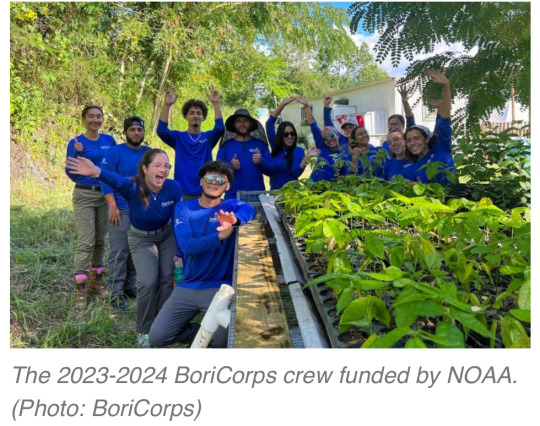
“Corps members help restore the island’s environmental and cultural assets and volunteer in hard-hit local communities. They also gain valuable paid work experience and connections to possible future employers, something many young Puerto Ricans struggle to find.”
3. Australian-born cheetah released in Africa for the first time ever. Watch the heart-warming moment Edie is set free
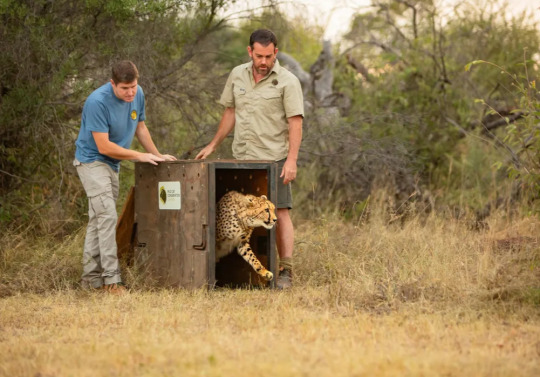
““The Metapopulation Initiative will bring in appropriate males, probably two initially, to breed with Edie,” King says. “It’s those future cubs, and their cubs, that will ensure the legacy of spreading Edie’s genetics across the southern African metapopulation. And we will have also provided Edie – a wild animal, let’s not forget – with a chance of a life in the wild.””
4. Baby Bald Eagles Confirmed in 2 of 4 Nests in Will County Forest Preserves

“A pair of fuzzy eaglet heads were spotted popping up out of one of the nests this week, officials said. Two weeks ago, monitors noticed adult eagles feeding an unseen hatchling (or hatchlings) in a different nest.”
5. New Hope for Love for Japanese Children Needing Families
“The new system, established by a 2022 law, offers private childcare institutions financing to transform their business model into “Foster Care Support Centers” that recruit, train, select, and support foster parents, and assist the independence of children living in foster families. If a childcare institution becomes a Foster Care Support Center, the government will fund full-time staff members based on the number of foster households they cater to.”
6. Nexamp nabs $520M to build community solar across the US

“Nexamp, a community solar developer and project owner, has secured a whopping $520million to install solar arrays around the nation in one of the largest capital raises to date for this growing sector. Community solar gives renters, small businesses and organizations the chance to benefit from local solar power even if they can’t put panels on their own roofs.”
7. A natural touch for coastal defense: Hybrid solutions which combine nature with common “hard” coastal protection measures may offer more benefits in lower-risk areas
“Common “hard” coastal defenses, like concrete sea walls, might struggle to keep up with increasing climate risks. A new study shows that combining them with nature-based solutions could, in some contexts, create defenses which are better able to adapt.”
8. Rewilding program ships eggs around the world to restore Raja Ampat zebra sharks

“A survey estimated the zebra shark had a population of 20 spread throughout the Raja Ampat archipelago, making the animal functionally extinct in the region. […] Researchers hope to release 500 zebra sharks into the wild within 10 years in an effort to support a large, genetically diverse breeding population.”
9. Forest Loss Plummets in Brazil and Colombia

“New data reveals a decline in primary forest loss in Brazil and Colombia, highlighting the significant impact of environmental reforms in curbing deforestation. According to 2022-2023 data from the University of Maryland’s GLAD Lab and World Resource’s Institute (WRI), primary forests in Brazil experienced a 36 per cent decrease in deforestation under President Inácio Lula da Silva’s leadership, reaching its lowest level since 2015. Colombia nearly halved (by 49 per cent) its forest loss under the administration of President Gustavo Petro Urrego, who has prioritised rural and environmental reform.”
10. New Agreement Paves the Way for Ocelot Reintroduction on Private Lands

“With the safe harbor agreement in place, partners plan to begin developing a source stock of ocelots for reintroduction. Over the next year, they plan to construct an ocelot conservation facility in Kingsville to breed and raise ocelots. Producing the first offspring is expected to take a few years.”
April 1-7 news here | (all credit for images and written material can be found at the source linked; I don’t claim credit for anything but curating.)
#hopepunk#good news#endangered#law#puerto rico#conservation#habitat#australia#cheetah#africa#big cats#bald eagle#birds#eagles#japan#foster care#solar#solar panels#solar energy#solar power#community solar#coastal#ocean#climate#shark#deforestation#rewilding#south america#ocelot#environment
10 notes
·
View notes